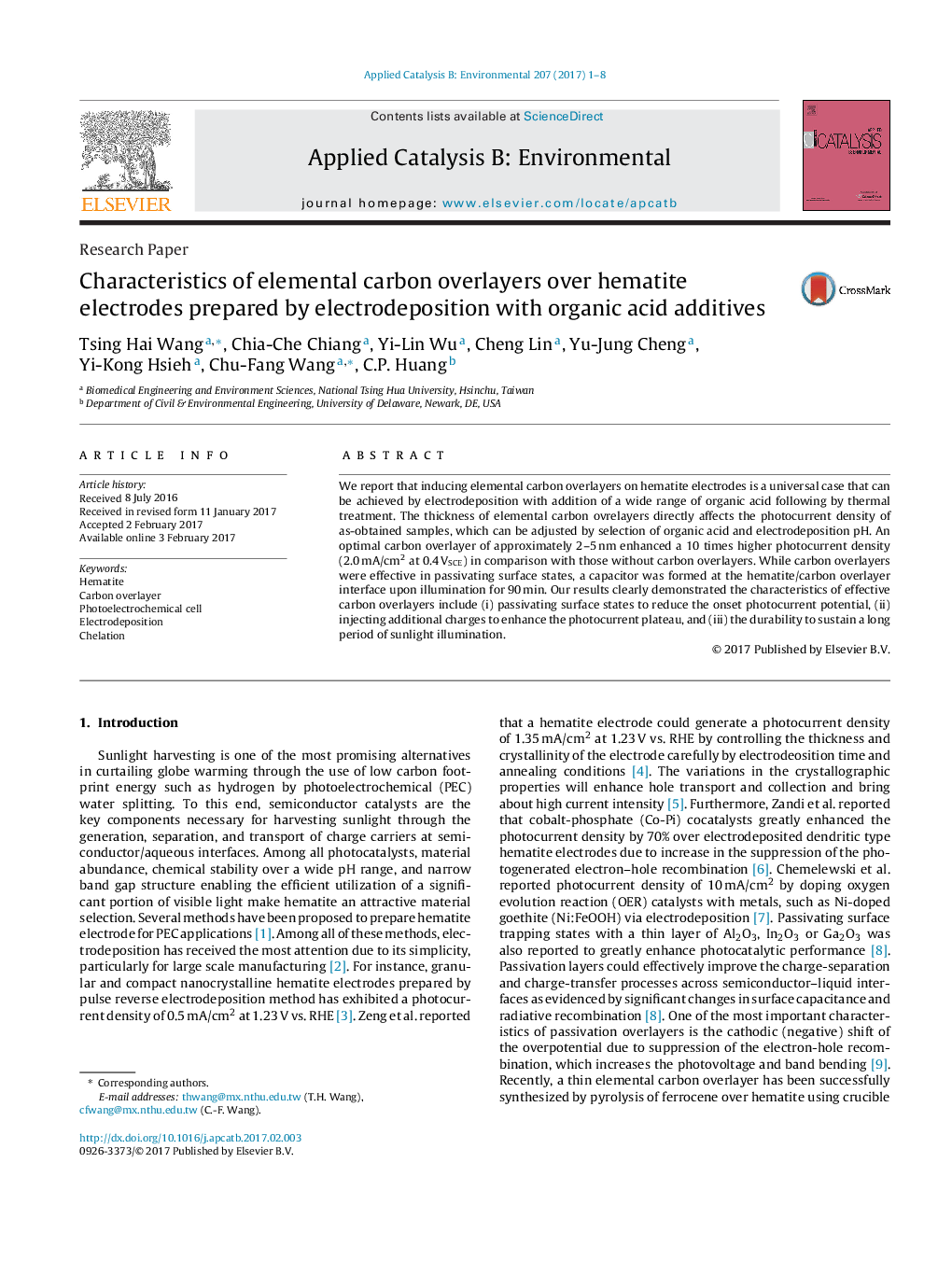| کد مقاله | کد نشریه | سال انتشار | مقاله انگلیسی | نسخه تمام متن |
|---|---|---|---|---|
| 6454042 | 1418813 | 2017 | 8 صفحه PDF | دانلود رایگان |
- Electrodeposition in the presence of organic acid additives can induce carbon overlayers.
- Effective carbon overlayers would passivate surface states and inject additional charges.
- A thin carbon overlayer is less stability to sustain a long period of sunlight illumination.
We report that inducing elemental carbon overlayers on hematite electrodes is a universal case that can be achieved by electrodeposition with addition of a wide range of organic acid following by thermal treatment. The thickness of elemental carbon ovrelayers directly affects the photocurrent density of as-obtained samples, which can be adjusted by selection of organic acid and electrodeposition pH. An optimal carbon overlayer of approximately 2-5Â nm enhanced a 10 times higher photocurrent density (2.0Â mA/cm2 at 0.4Â VSCE) in comparison with those without carbon overlayers. While carbon overlayers were effective in passivating surface states, a capacitor was formed at the hematite/carbon overlayer interface upon illumination for 90Â min. Our results clearly demonstrated the characteristics of effective carbon overlayers include (i) passivating surface states to reduce the onset photocurrent potential, (ii) injecting additional charges to enhance the photocurrent plateau, and (iii) the durability to sustain a long period of sunlight illumination.
157
Journal: Applied Catalysis B: Environmental - Volume 207, 15 June 2017, Pages 1-8
